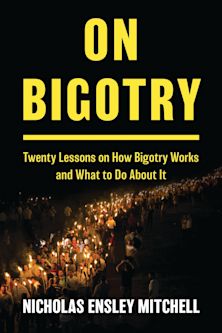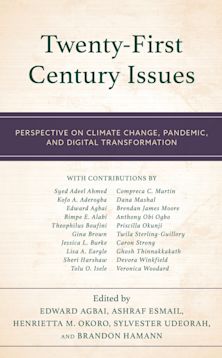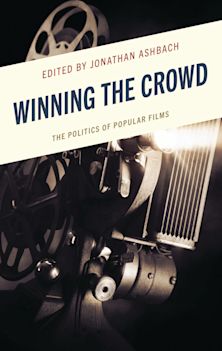Understanding Inequality
The Intersection of Race/Ethnicity, Class, and Gender
Barbara A. Arrighi (Author) , Judi Addelston (Contributor) , Derrick Bell (Contributor) , Karen Blumenthal (Contributor) , Judith Butler (Contributor) , Jane Jerome Camhi (Contributor) ,
- Textbook
Understanding Inequality
The Intersection of Race/Ethnicity, Class, and Gender
Barbara A. Arrighi (Author) , Judi Addelston (Contributor) , Derrick Bell (Contributor) , Karen Blumenthal (Contributor) , Judith Butler (Contributor) , Jane Jerome Camhi (Contributor) ,
- Textbook
This product is usually dispatched within 2-4 weeks
- Delivery and returns info
-
Flat rate of $10.00 for shipping anywhere in Australia
Description
As the age of globalization and New Media unite disparate groups of people in new ways, the continual transformation and interconnections between ethnicity, class, and gender become increasingly complex. This reader, comprised of a diverse array of sources ranging from the New York Times to the journals of leading research universities, explores these issues as systems of stratification that work to reinforce one another. Understanding Inequality provides students and academics with the basic hermeneutics for considering new thought on ethnicity, class, and gender in the 21st century.
Table of Contents
Chapter 1 Mysterious Power of Social Structures
Chapter 2 "They" Are All the Same, but Each Member of My Group is Unique
Part 2 Embedded Ideology: Racism/Ethnocentrism and Sexism
Part 3 The Other Wears Many Faces
Chapter 3 Black Women and Feminism
Chapter 4 Divining Our Racial Themes
Part 4 Structured Inequality-The Invisible Iron Cage of Class
Chapter 5 Size 6: The Western Women's Harem
Part 5 Structured Inequality-Race/Ethnicity
Chapter 6 Diversity and Its Discontents
Part 6 Structured Inequality-Acquiring Gender
Chapter 7 Arturo Madrid
Part 7 Corporate Gatekeeping: Fitting In
Chapter 8 The Second Sex
Part 8 Women's Equality: Progress and Resistance
Part 9 The Price of Deviance
Chapter 9 The Double-Bind of the "Working-Class" Feminist Academic
Chapter 10 (In) Secure Times: Constructing White Working-Class Masculinities in The Late Twentieth Century
Part 10 Patriarchy and Its Consequences
Chapter 11 A Black Women Took My Job
Part 11 The Crisis in Education Has Consequences for the "Isms"
Chapter 12 Are Men Marginal to the Family? Insights from Chicago's Inner City
Chapter 13 Policing the Ghetto Underclass: The Politics of Law
Chapter 14 America's Iron Curtain: The Border Patrol State
Chapter 15 The Heartland's Raw Deal: How Meatpacking is Creating a New Immigrant Underclass
Chapter 16 Bodies that Matter: On the Discursive Limits of "Sex"
Chapter 17 Believing Is Seeing: Biology as Ideology
Chapter 18 Towards Safer Societies: Punishment, Masculinities, and Violence Against Women
Chapter 19 Tomboys Yes, Janegirls Never
Chapter 20 Hormonal Hurricanes: Menstruation and Female Behavior
Chapter 21 Talking from 9 to 5: How Women's and Men's Conversational Styles Affect Who Gets Heard, Who Gets Credit, and What Gets Done at Work
Chapter 22 Women in the Power Elite
Chapter 23 Women above the Glass Ceiling: Perceptions on Corporate Mobility and Strategies for Success
Chapter 24 Invisible Women
Chapter 25 Women against Women: American Anti-Suffragism, 1880-1920
Chapter 26 Where the Girls Are: Growing Up Female with the Mass Media
Chapter 27 Mating, Marriage, and the Marketplace: A Survey of College Students' Attitudes and Expectations
Chapter 28 The Unruly Woman: Gender and the Genres of Laughter
Chapter 29 Black Man with a Nose Job: How We Defend Ethnic Beauty
Chapter 30 Hitting Bottom: Homelessness, Poverty, and Masculinity
Chapter 31 Older Men as Invisible Men in Contemporary Society
Chapter 32 The Subjection of Women
Chapter 33 Real Rape
Chapter 34 Clarence Thomas, Patriarchal Discourse, and Public/Private Spheres
Chapter 35 How Harvard Helped Curb Title IX's Role In Admitting Women
Chapter 36 Downsizing Higher Education: Confronting the New Realities of the High-Tech Information Age Global Economy
Product details
| Published | 19 Apr 2007 |
|---|---|
| Format | Paperback |
| Edition | 2nd |
| Extent | 396 |
| ISBN | 9780742546790 |
| Imprint | Rowman & Littlefield Publishers |
| Dimensions | 229 x 156 mm |
| Publisher | Bloomsbury Publishing |
Reviews

ONLINE RESOURCES
Bloomsbury Collections
This book is available on Bloomsbury Collections where your library has access.


































